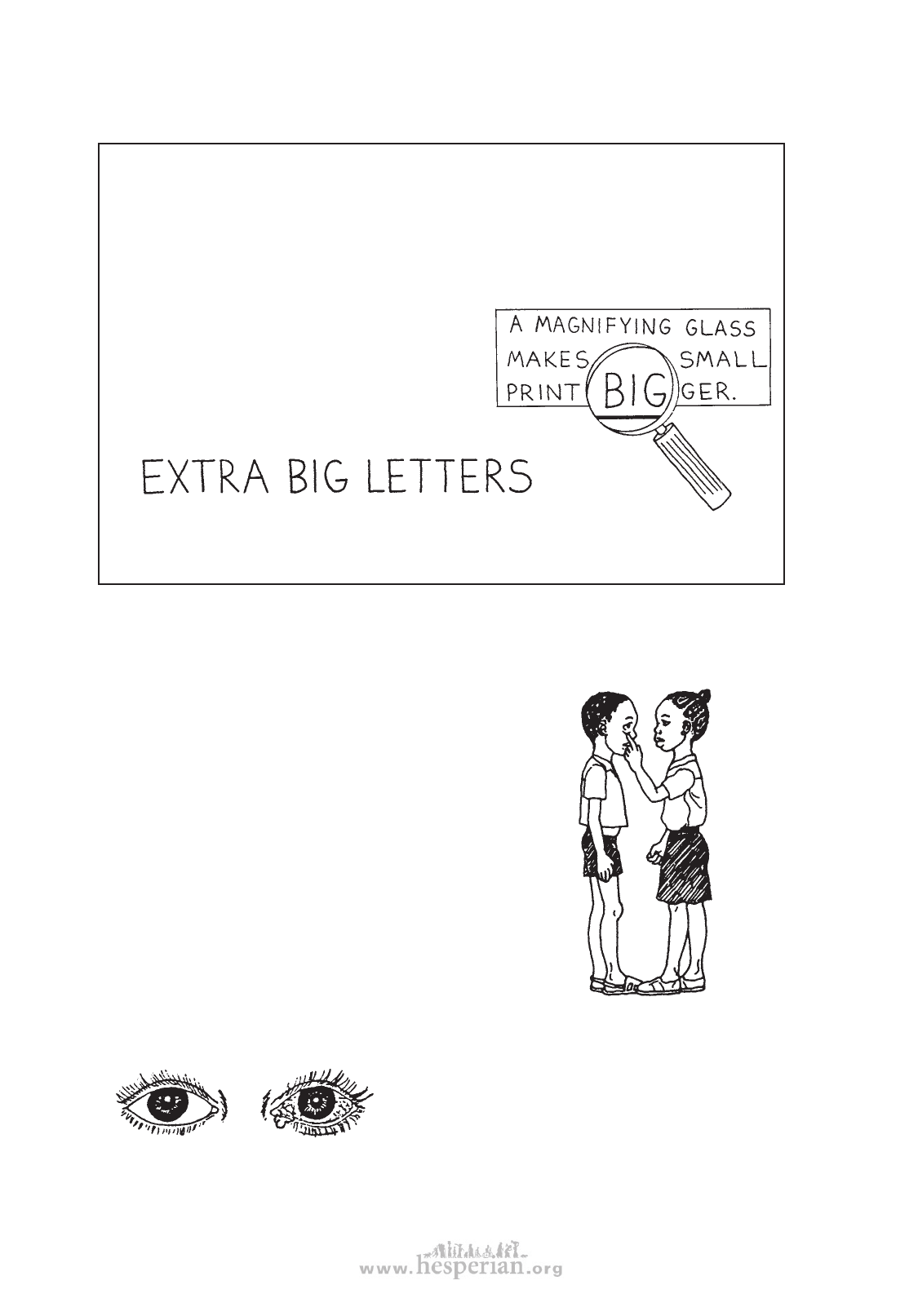
454 chapter 47
After the children practice testing each other, they can test the eyesight of those
in the younger grades and the children who will be starting school soon.
WHAT TO DO FOR THE CHILD WHO SEES POORLY
• Be sure he sits in front, close to the blackboard.
• Write large and dark on the blackboard, and check often to make sure
he can read what is there.
• If possible, the child should go to a health worker for more tests.
He may need glasses.
• If he cannot get glasses, try to find a
magnifying glass. This may help him
read small letters.
• It he has not learned to read and write
because he does not see well, teach him
with
• If the child still has trouble reading,
have another child read his books and
lessons to him aloud.
Looking at each other’s eyes for signs of problems
Start with questions to get the children interested. For example:
• Are your eyes the same as your classmates?
Shiny? Clear?
• How about the eyes of your younger brothers
and sisters?
• Can you see well in the dark? Or do you often
stumble at night?
• Do a child’s eyes look dull? Are there any
unusual spots or wrinkles? If so, see a health
worker.
Many children in different parts of the world become
blind because they do not eat foods that make their
eyes healthy. Eating yellow fruits or dark green
leafy vegetables helps protect the eyes. Some extra
cooking oil added to food also helps.
If children’s eyes are red or sore, you can
suggest that they wash them often with clean
water with a little salt in it (no saltier than
tears). This may help eyes get better and keep
the flies away. If they do not get better soon,
see a health worker.
For more information on eye problems and blindness, see Chapter 30.
Disabled village Children